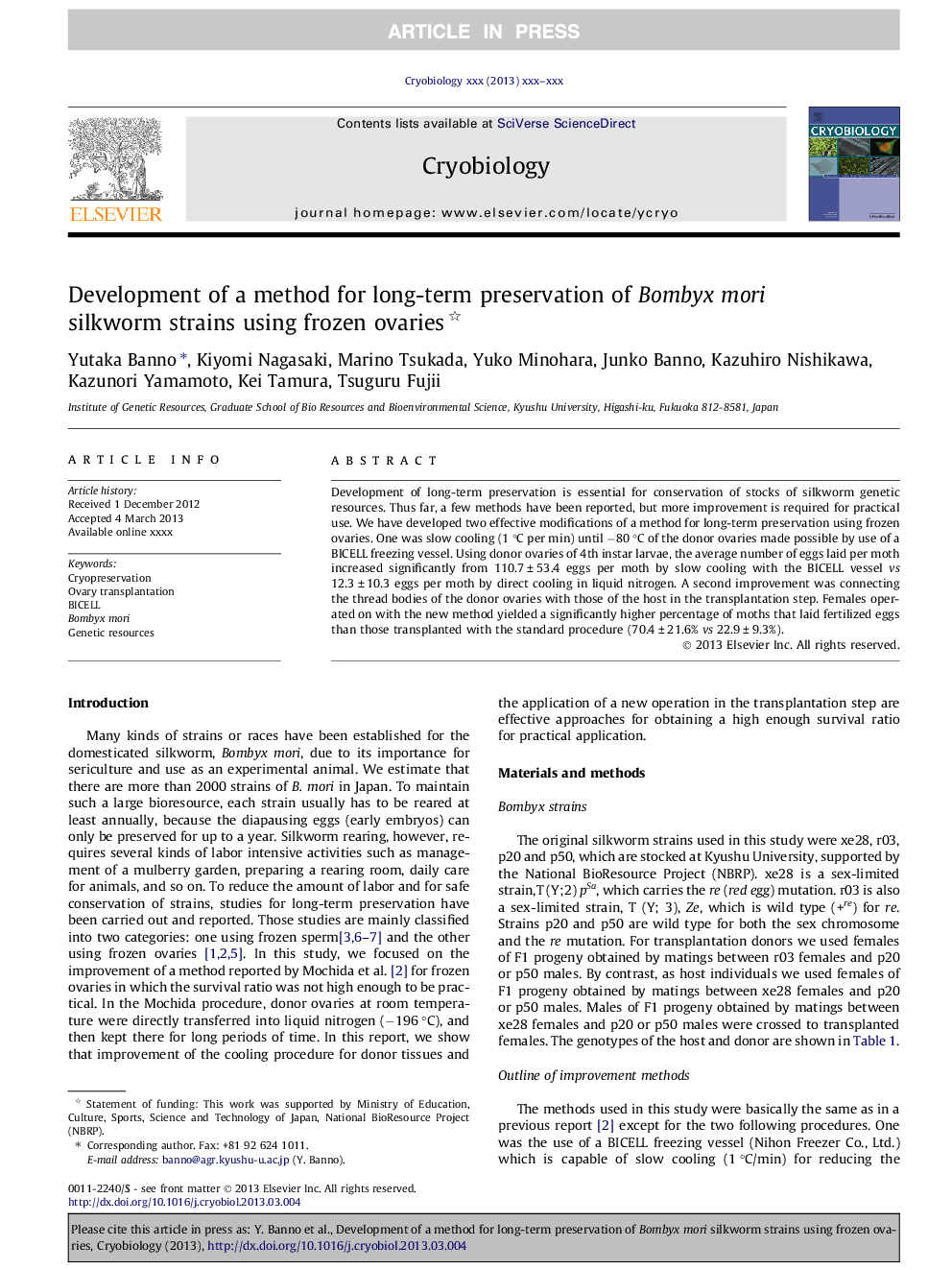| Article ID | Journal | Published Year | Pages | File Type |
|---|---|---|---|---|
| 10928103 | Cryobiology | 2013 | 5 Pages |
Abstract
Development of long-term preservation is essential for conservation of stocks of silkworm genetic resources. Thus far, a few methods have been reported, but more improvement is required for practical use. We have developed two effective modifications of a method for long-term preservation using frozen ovaries. One was slow cooling (1 °C per min) until â80 °C of the donor ovaries made possible by use of a BICELL freezing vessel. Using donor ovaries of 4th instar larvae, the average number of eggs laid per moth increased significantly from 110.7 ± 53.4 eggs per moth by slow cooling with the BICELL vessel vs 12.3 ± 10.3 eggs per moth by direct cooling in liquid nitrogen. A second improvement was connecting the thread bodies of the donor ovaries with those of the host in the transplantation step. Females operated on with the new method yielded a significantly higher percentage of moths that laid fertilized eggs than those transplanted with the standard procedure (70.4 ± 21.6% vs 22.9 ± 9.3%).
Related Topics
Life Sciences
Agricultural and Biological Sciences
Agricultural and Biological Sciences (General)
Authors
Yutaka Banno, Kiyomi Nagasaki, Marino Tsukada, Yuko Minohara, Junko Banno, Kazuhiro Nishikawa, Kazunori Yamamoto, Kei Tamura, Tsuguru Fujii,
